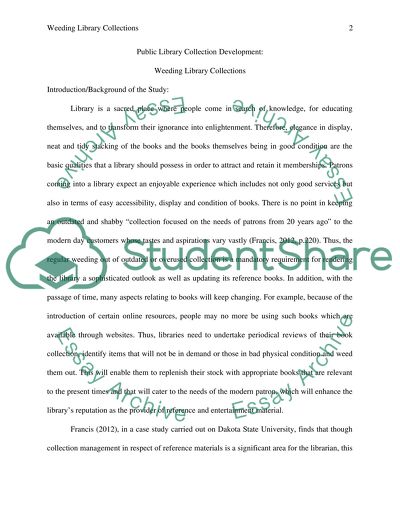Cite this document
(“Public Library Collection Development: WEEDING LIBRARY COLLECTIONS Research Paper”, n.d.)
Public Library Collection Development: WEEDING LIBRARY COLLECTIONS Research Paper. Retrieved from https://studentshare.org/literature/1461470-public-library-collection-development-weeding
Public Library Collection Development: WEEDING LIBRARY COLLECTIONS Research Paper. Retrieved from https://studentshare.org/literature/1461470-public-library-collection-development-weeding
(Public Library Collection Development: WEEDING LIBRARY COLLECTIONS Research Paper)
Public Library Collection Development: WEEDING LIBRARY COLLECTIONS Research Paper. https://studentshare.org/literature/1461470-public-library-collection-development-weeding.
Public Library Collection Development: WEEDING LIBRARY COLLECTIONS Research Paper. https://studentshare.org/literature/1461470-public-library-collection-development-weeding.
“Public Library Collection Development: WEEDING LIBRARY COLLECTIONS Research Paper”, n.d. https://studentshare.org/literature/1461470-public-library-collection-development-weeding.


